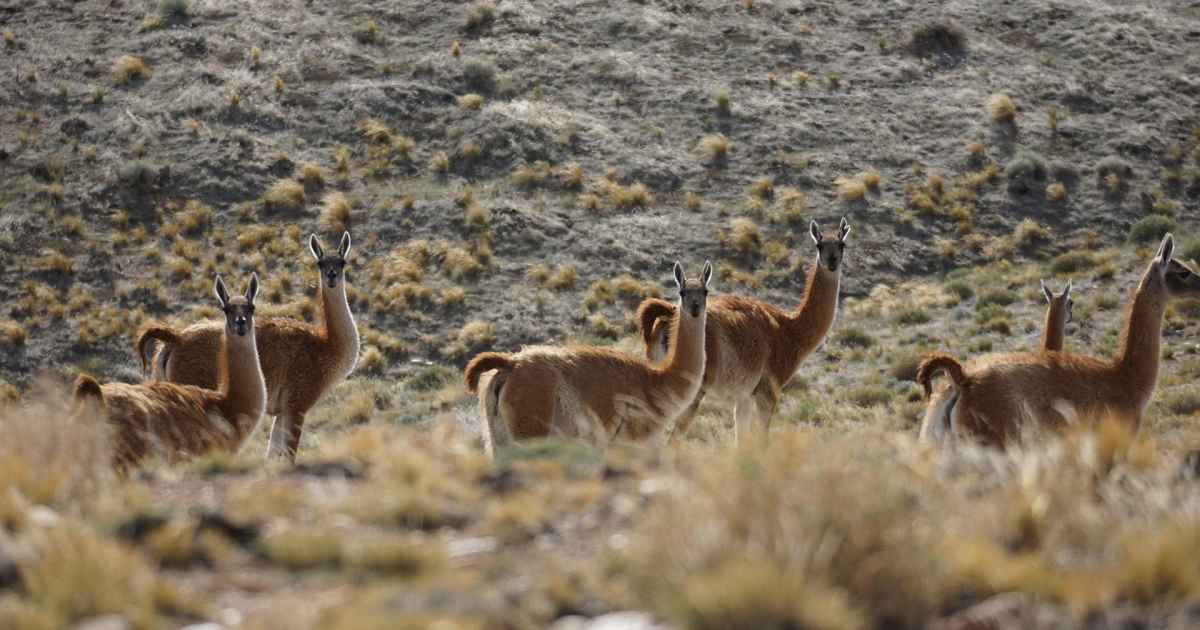The guanaco, the rockfish shark, the bottlenose dolphin and the Magellanic plover, species present in Argentina, were incorporated into the list of the Convention on the Conservation of Migratory Species of Wild Animals (CMS) and local specialists highlighted it as a “milestone” for conservation initiatives for these species.
According to new data from the United Nations Environmental Conservation Monitoring Center, 44% of the species on the list are experiencing population declines and three out of four species are being affected by habitat loss, degradation and fragmentation.
The incorporation of the species to the CMS list occurred within the framework of the Convention on the Conservation of Migratory Species of Wild Animals that took place between February 12 and 17 in Uzbekistan and was the result of a regional initiative which included scientists and organizations from Argentina, Bolivia, Paraguay, Peru, Chile, Uruguay and Brazil.
«The risk of extinction is increasing for migratory species globally, including those not listed by CMS«, Ramiro Ovejero, Conicet researcher and one of the promoters of the inclusion of the guanaco, explained to Télam.
With the inclusion of the guanaco on the CMS list, Ovejero considered that it will be possible to strengthen border conservation initiatives and recommend sustainable management guidelines for the species that lives along the Andes Mountains from the highlands to Tierra del Fuego. .
In relation to the guanaco, the number of specimens decreased in recent years, documenting and 93% decline in 20 years in northern Patagonia, according to data from the civil organization WCS Argentina.
It was also discovered that in areas without fences and low livestock density, guanacos are migratory and annually inhabit areas of up to 220,000 hectares.
Among the main threats to this species are «the deterioration of grasslands “from livestock use due to overgrazing, along with the growing aridity caused by climate change, which causes a lack of food for this species,” and the hunting of specimens, Andrés Novaro, director, detailed to Télam of Terrestrial Conservation of WCS Argentina.
Guanacos, in addition, suffer the problem of fences in most fields: “Migration requires that animals be able to move freely from one place to another when the amount of food changes,” throughout the year, Novaro said.
Meanwhile, Juan Martín Cuevas, coordinator of Shark and Ray Conservation at WCS Argentina, referred to the situation of the scalelandrún shark, another migratory species representative of the Argentine coast that is in critical danger of extinction.
“Like all large sharks, the scalender is a top predator in the marine ecosystem, which places it up the food chain, playing a key role in maintaining balance between different levels of the food chain“said the specialist.
Due to strong fishing pressure, its global population was reduced to 80% in seven decades, and in the southwest Atlantic it was reduced to 90% in 40 years, reported WCS Argentina.
The third species included is the Magellanic plover, a bird classified as “vulnerable” by the Red List of Threatened Species of which, it is estimated, there are around 500 specimens left in the southern Patagonian steppe, according to data from the Ambiente Sur association. .
Among the main threats of this species are “the loss of habitat due to urbanization or the impact of human activities, such as the traffic of vehicles or livestock in the nesting area, drought and implementation of infrastructure projects.” “that do not take into account the habitat of this and other species,” explained Germán Montero, executive director of Ambiente Sur.
Finally, the Lahille bottlenose dolphin, which in Argentina is found from the coasts south of Buenos Aires to Chubut, experiences a decline in its population on both banks of the Río de la Plata estuary starting in the 1990s.
This is due to problems such as incidental capture in fishing nets, chemical and acoustic pollution, and the destruction of their habitat, listed Miguel Iñiguez, president of the Cethus Foundation, one of the organizations that promoted the incorporation of this dolphin in the CMS appendices.
